Gums
Gum health. Gingivitis and Periodontitis
Gingivitis and periodontitis are forms of periodontal disease. They affect a large portion of the population. And consist in the inflammation of the gums and the surrounding tissue that covers the teeth, The inflammation is caused by the bacteria in the dental plaque. It may occur without bone destruction (gingivitis) or with the damage of the jaw bones (Periodontitis). If neither of this conditions is treated it could end in dentition loss.

These diseases have their origin in the accumulation of dental plaque and it’s bacteria under the gums. Bad dental higiene, hormonal changes, smoking, some sistemic diseases or bad aligned teeth are factors that may increase the possibility of suffering gingivitis.
The treatment for regular gingivitis requires the elimination of the dental plaque deposits under the gums. However, this may not be enough to actually control de disease, especially if this procedure is carried out by unexpert hands or in a hurry way.
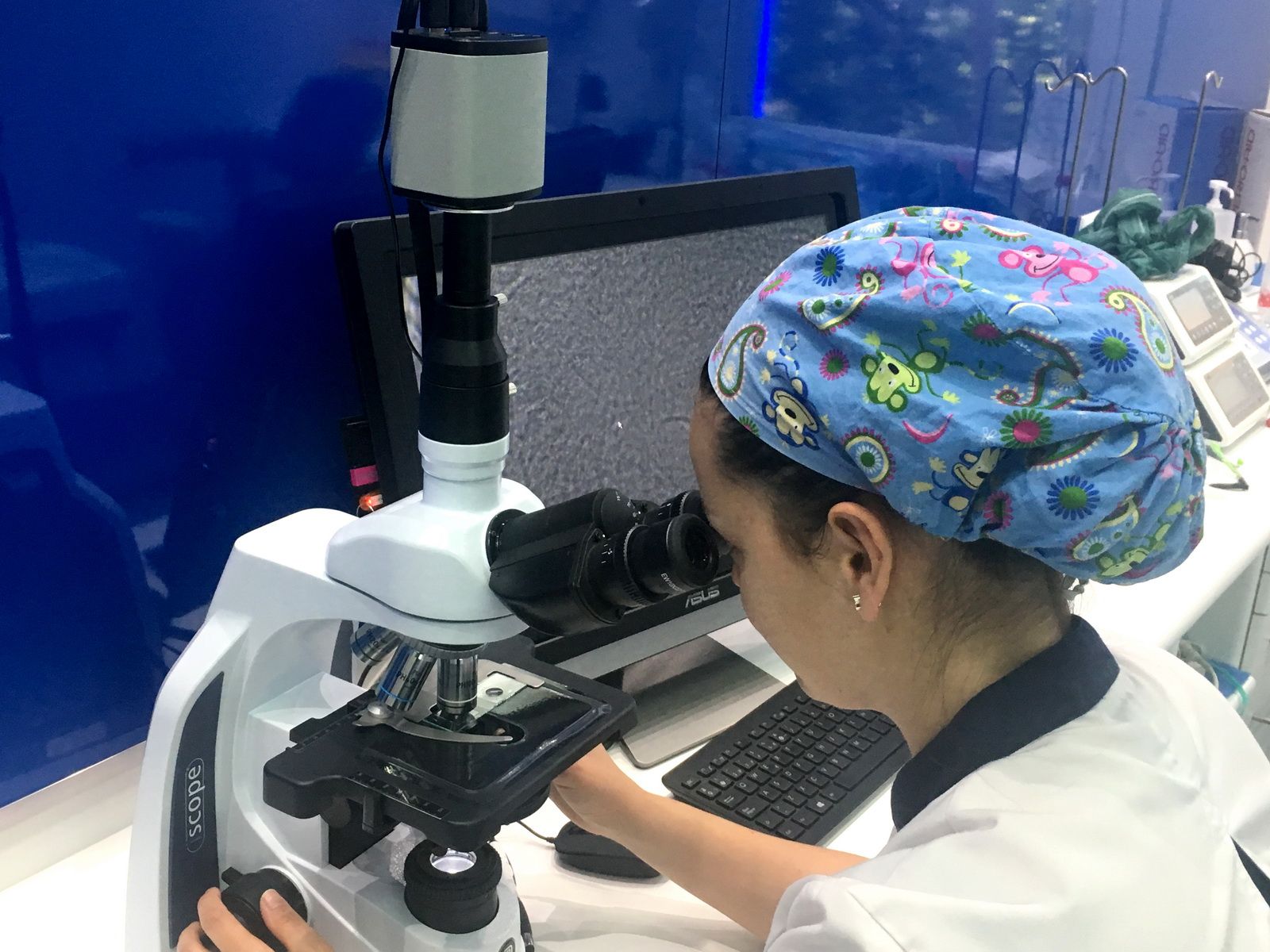
At the Padrós Dental Clinic (Clínica Dental Padrós) we care to promote and apply the right treatment for every case. Besides performing a complete dental cleaning and eliminating in a carefully way every dental plaque deposit in the mouth, it’s usually convenient to do a culture of this gingivitis-provoking germs to treat every case according to its requirements, carry out antibacterial irrigations, polish the teeth and avoid situations that favor the problem ( Bad aligned teeth, food remains between them, etc…)
Finally, it’s necessary to stimulate the attachment of the gums with the tooth to achieve a good closure within them, thus sealing the door to new gingivitis to appear. All of it must be made under control with regular exams and periodontal charts that measure the quality of the gum seal around the teeth.
Depending on the case, we have very advanced treatments such as laser treatment, microscopic analysis and bacterial cultures, photodynamic therapy, regenerative treatments and microsurgery, as well as gum coverage with the pinhole technique or v.i.s.t.a..

Treatment of inflamed gums (gingivitis-periodontitis-peri-implantitis)
1
Periodontogram: In order to know the state of the gums, have a good diagnosis and be able to prepare an appropriate treatment plan, we must first analyze their condition. In this way we will know, objectively, how they are at the present moment.To do this, with the help of the computer and the Florida Probe® system, we created a map that shows the state of the gums around each tooth (6 evaluation points for each tooth). Based on what we see on that map, and following our protocols based on scientific evidence, we program the appropriate treatment for each case. This periodontal probing chart will also serve to verify, objectively, whether we have managed to completely cure the gum problem at the end of the treatment, and will also allow us to monitor its evolution over time, during regular maintenance and check-ups. In this way, we can fully control the state of the gums and we can keep them healthy throughout life.

2
Cleaning with ultrasound and manual curettage: Guided by the gum map and radiographs, and in expert hands, we make sure first of all to eliminate all the bacterial plaque and tartar present, not only in the visible area of the teeth , but also under the gums and in the hidden zones where access is more difficult. This first step is essential to start the recovery, but we have to go further.
3
Bacterial culture and microscopic control: We all have bacteria in our mouths, but there are many different varieties, and some are more aggressive than others. The most neglected mouths often contain anaerobic species of bacteria and even amoebae, which produce a lot of inflammation and destruction of the supporting bone of the teeth. In case of identifying this type of microorganisms, we must eliminate them to ensure that the oral flora is replenished with healthier bacteria. For this we use irrigation systems under the gums, application of bioadhesive gels of topical antibiotics or sometimes systemic antibiotics for a few days.

4
Elimination of inflammatory epithelial tissue from the inner part of the gums: Explained schematically, the gums have two layers. The inner layer is made up of connective tissue, which allows it to attach to the jaw bone and teeth. The outer layer is covered by epithelial tissue, which serves to protect against food rubbing, chemicals, bacteria, brushing, etc. When tartar accumulates under the gums, the epithelial tissue grows inside the gingival sulcus to defend against irritation caused by bacteria. For this reason, if we simply carry out a conventional cleaning once a year, we cannot solve the problem or stop periodontal disease, since, even if we can eliminate tartar, the gums cannot re-adhere to the tooth, leaving some space (a “periodontal pocket”) under the gums, where in a short time bacterial plaque and tartar accumulates again. Formerly, to remove this layer of internal epithelial tissue, it was necessary to undergo surgery. Today it is not necessary. The solution is much simpler and more comfortable for the patient, and we can achieve it by applying irrigations under the gums, which do not generate the slightest discomfort and let us achieve the same results.
5
Laser Treatment: Modern lasers allow us to eliminate all the bacteria inside the periodontal pockets (under the gums). They also allow us to destroy inflammatory tissue and can be used to regenerate bone in a minimally invasive way, without having to undergo any surgery.

6
Periodontal and regenerative surgeries: Although we try to avoid having to perform any surgery, in the most severe cases it may be necessary to do it in order to solve the problem. There are many surgical techniques that allow us to treat advanced gum problems. Often we can not only cure the gum disease that is present, but we can also regenerate locally the lost bone using guided bone regeneration techniques. grafts, the use of growth factors, synthetic enamel proteins, etc.
7
Teaching oral hygiene and maintenance: Once periodontal disease is cured, it is very easy to keep gums healthy by following our maintenance plans and regular control check ups. Teaching and motivating oral hygiene techniques at home is a very important part of the treatment.

With the correct follow-up, we can keep the gums under control throughout your whole life.

A correct dental and gum care is crucial to prevent the onset of a gingivitis problem.
The result of the integral gingivitis treatment must be controlled by periodontal probing charts that measure the quality of the seal at the gums level, around the teeth.







Frequently asked questions about gingivitis and periodontitis
Also known as gum disease or periodontal disease, it is an infection of the tissues surrounding the teeth and is a common cause of tooth loss. We call gingivitis to the initial stages of gum disease and periodontitis to the most advanced stage, in which there is also destruction of the bone that supports the teeth.
Very common. Seven out of ten people develop it at some point in their lives. It is the most common dental problem, and it can progress painlessly until it becomes a serious oral problem. That’s why it’s so important to prevent it before it becomes too serious.
Gum disease begins when plaque adhering to the visible edge of the gums. If plaque is not removed every day by brushing and flossing, it hardens into tartar. This promotes a bacterial infection leading to inflammation of the gums. In these early stages, the disease is better known as gingivitis.
You may not notice anything until the problem is very advanced. Untreated gingivitis often leads to periodontitis, where destruction of the bone supporting the teeth begins to occur. People with certain systemic diseases, or those on certain medications, as well as people who breathe frequently through their mouths or who have a low amount of saliva can more easily develop gingivitis problems.
- Smoking or chewing tobacco.
- Poor oral hygiene.
- Frequent mouth breathing.
- Dry mouth (which generates little saliva).
- Certain medications
- Certain systemic diseases.
- Malposition of the teeth (favours the accumulation of plaque and makes hygiene difficult).
- Sensitive gums, inflammation of the gums with a reddish hue and bleeding.
- Gums that have separated from the teeth.
- Gum retraction
- Persistent bad breath or bad taste.
- Movement of the teeth or a change in the bite.
Yes, there are different types of gum disease (Acute, Descamative, Ulcerative, Localised, etc.). It is necessary to diagnose it correctly in order to carry out the most appropriate treatment.
The specialist will analyse the state of the gums objectively by means of a periodonttal chart and X-rays.
Prevention is the most effective weapon in the fight against periodontal disease. It is essential to keep your teeth and gums healthy. Brush three times a day and floss or use interproximal brushes or water irrigators at least once every 24 hours. Correct brushing and flossing is equally important, as is the use of certain mouthwashes. In this way you will achieve good oral hygiene and avoid the appearance of dental plaque that causes the onset of gingivitis.
Make sure you visit your dentist regularly for regular check-ups, professional examinations and gum maintenance and you can look forward to a lifetime of healthy teeth and gums.
Brushing: brush your teeth carefully, paying special attention to the areas where the teeth and gums meet. Clean the entire surface of all teeth. Use the tip of the brush to clean behind the front teeth both upper and lower.
Flossing: Take a piece of floss about 30 cm long and wrap it around the middle fingers. Using one clean section of floss at a time, wrap the floss in a C-shape around a tooth. Run it through the tooth, from base to tip, a couple of times. Repeat for each tooth.
Our specialists will teach you how to perform your oral hygiene correctly.
Treatment for gums retraction
Pinhole gum rejuvenation treatment for receeding gums
Recession of the gums or retracted gums can be generated by periodontal disease, bruxism-grinding of teeth, too aggressive brushing habits or by the natural process of aging. Genetics, hormones, and smoking can also make gums more sensitive and fragile to recession.
Most gum recession patients do not realize that gum recession is occurring, as it occurs gradually. As a general rule, patients will appreciate some sensitivity or a surface appearance of the longer tooth.
Recession of the gums is not just an aesthetic question; When the gums retract, the sensitive roots of the teeth are exposed and spaces are generated between the teeth. These spaces are the ideal conditions for the accumulation of bacterial plaque and tartar. This can lead to more advanced periodontal disease, tissue and bone deterioration and an occasional tooth loss.
The best way to prevent recession of the gums is to brush and use the floss each and every day using a proper technique and be up to date in oral cleaning and checkups.
Learn how the Pinhole surgical procedure can change your smile
The Pinhole surgical technique is a breakthrough in the treatment of receding gums. Traditional treatment, while efficient, involves tissue grafting procedures that can be time-consuming and uncomfortable.
This new procedure makes it possible to cover all recessions in the same jaw in a single intervention, and does not require taking grafts from the palate. The technique uses special, uniquely designed instruments that, through a small access incision under the lip, allow the gums to be moved to the original position supported by small resorbable collagen membranes. Despite being a less invasive surgery than conventional treatments with grafts, some inflammation may appear during the postoperative period (7-10 days) and requires careful hygiene and habits for 4-6 weeks.
The treatment can cover 50% of the distance between the tip of the gum papilla and the point of maximum retraction in a fairly predictable way.
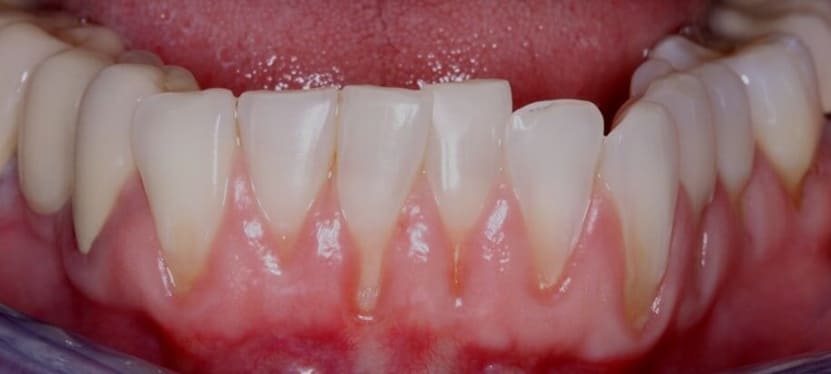
before
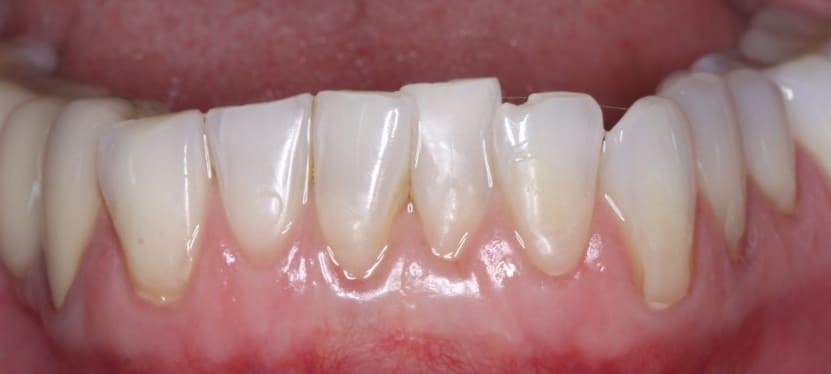
after
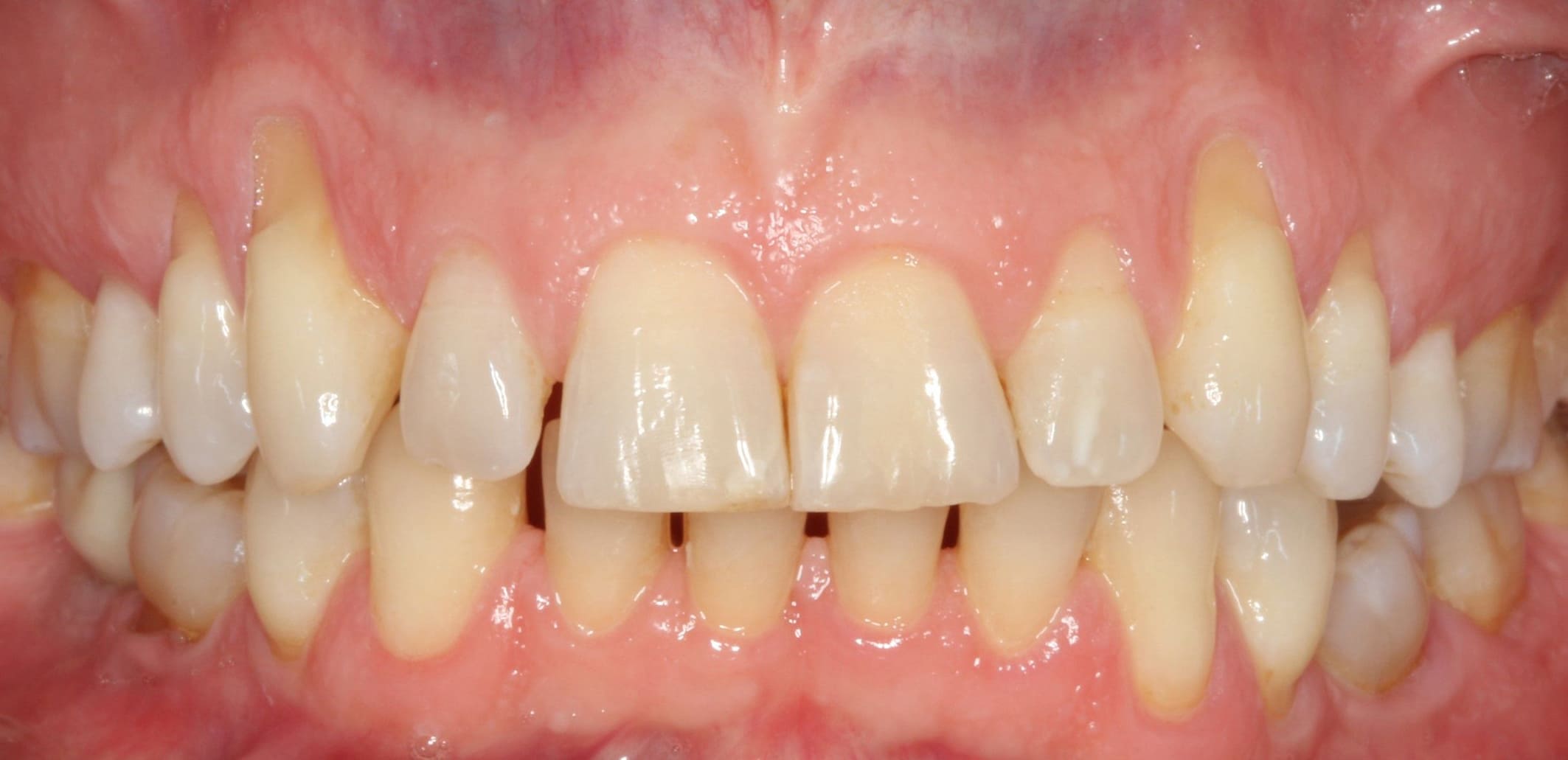
before
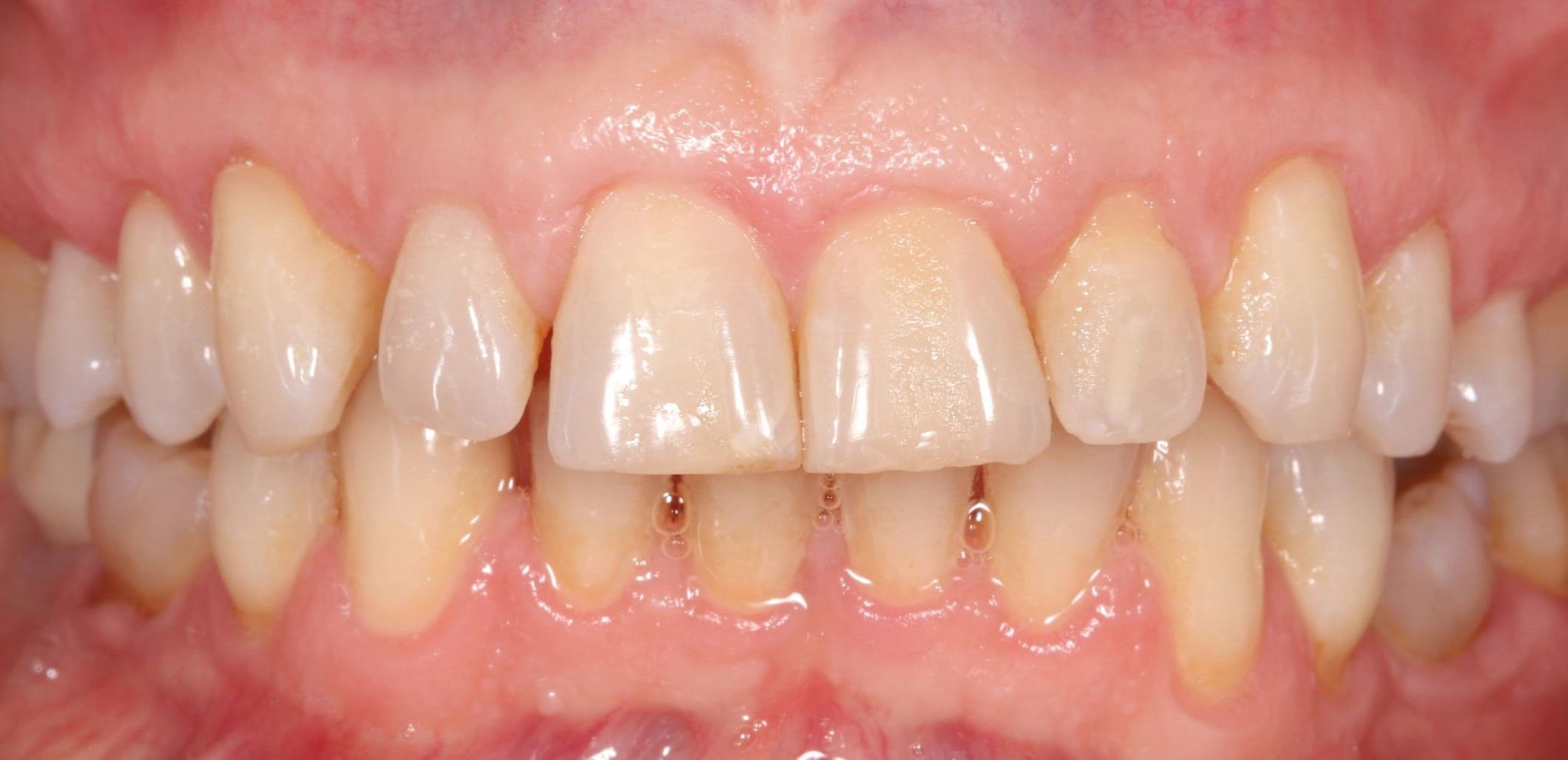
after
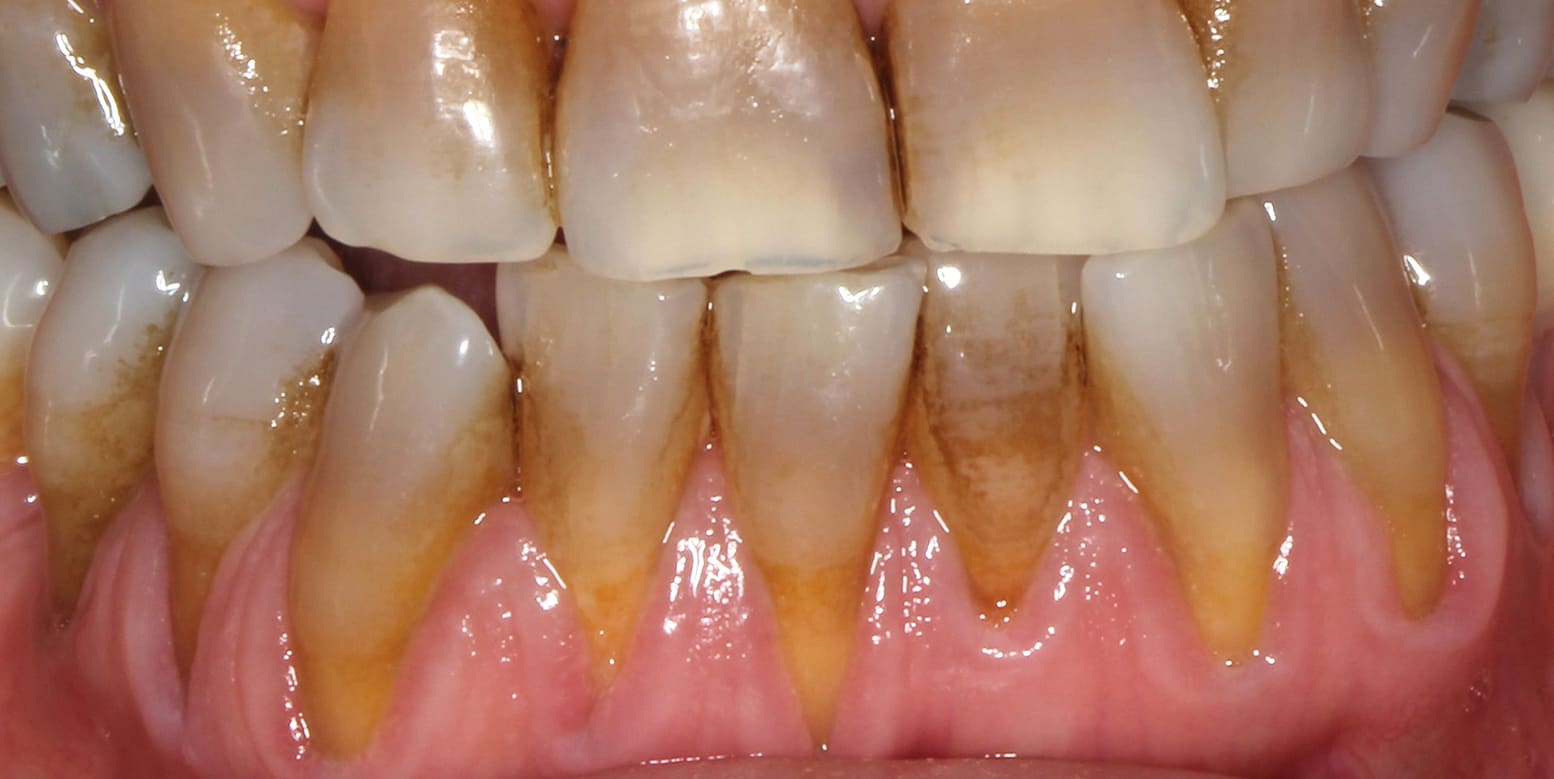
before
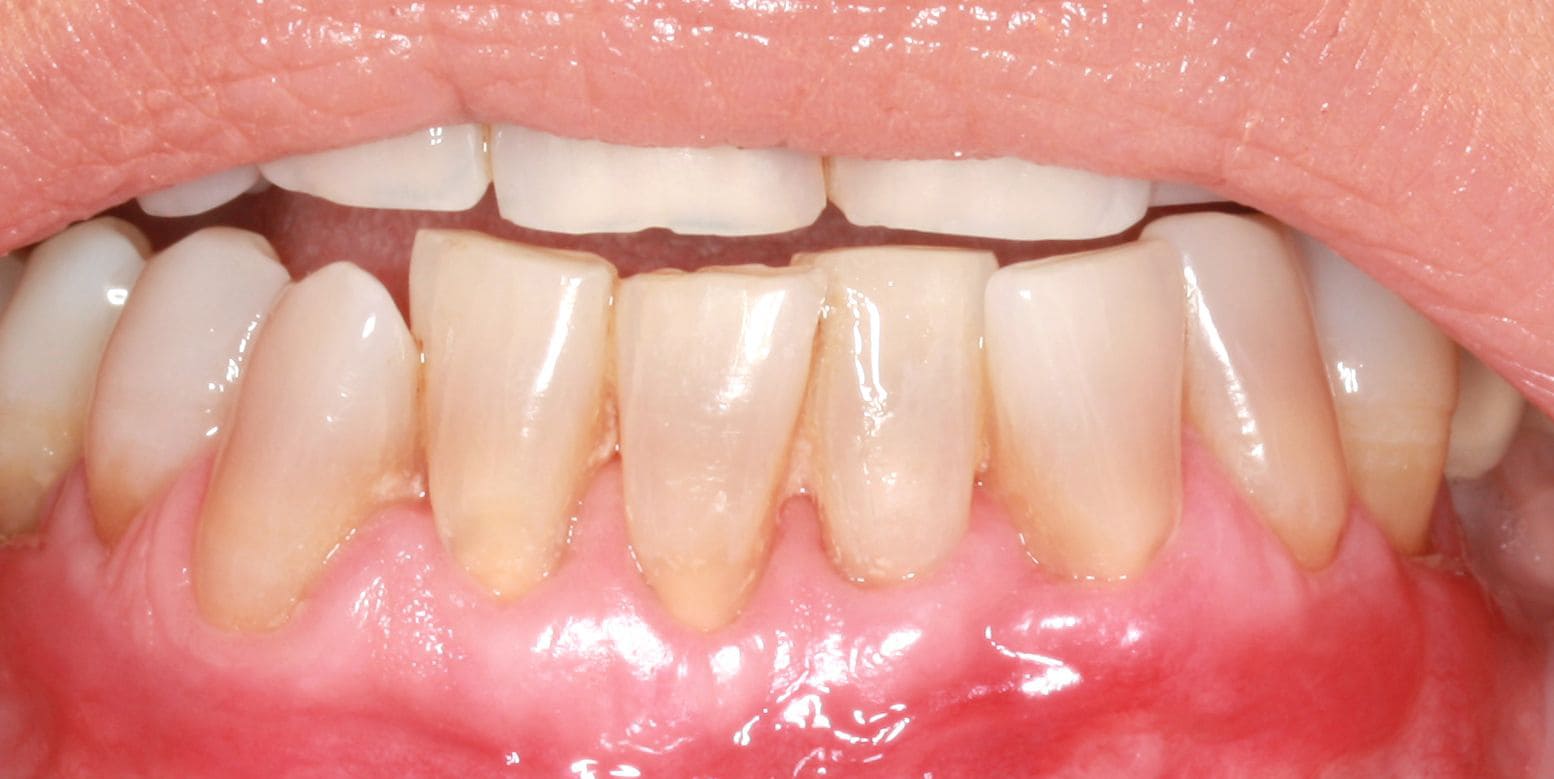
after
Traditional Gum Recession Treatment
Since recession of the gums is a gradual process, most people are not even aware that they have it. You may notice that more surface of your teeth is exposed, or greater sensitivity to thermal stimuli or the dentist can alert you if we see it in the course of a dental checkup.
The traditional treatment for recession of the gums usually involves making a soft tissue graft. In this type of procedure, a small piece of tissue is taken from another area of the mouth, usually the palate, and is sutured in place over the exposed part of the root of the tooth. This procedure, which is usually laborious, can be bothersome and requires the use of many sutures.
A new treatment approach
The Pinhole Gum Rejuvenation Surgical Technique offers a number of unique benefits and has revolutionized the way we view the recession treatment of gums. Instead of scalpels, this procedure uses an instrument that creates a small hole in the patient’s healthy gingiva tissue over the area that needs treatment. This small opening can accommodate specialized instruments that the doctor will use to gently loosen and enlarge the gum tissue, covering the exposed areas of the teeth where the soft tissue has retracted.
When the gum tissue has changed position, a small strip of collagen is placed in the treatment area. This will promote the natural production of collagen and elastin, which will promote healing and reduce inflammation.
Instead of requiring tissue grafts and sutures, this procedure simply involves adjusting the gum tissue already present at the treatment site, with less postoperative discomfort and minimal bleeding.
Patients candidates for Pinhole treatment
Many patients suffering from periodontal disease and/or receding gums would like to restore their gum line and protect their tooth roots, but do not wish to go through the traditional gum grafting procedure.
These patients are candidates for Pinhole treatment. This technique is the first minimally invasive procedure to effectively treat gum recession. This treatment, which can often be performed even without sutures, uses already present healthy gum tissue, which is repositioned using instruments that work through a very small opening in the gums.
The procedure is generally less uncomfortable than conventional techniques and usually requires less recovery time. If you suffer from gum recession and would like to learn more about how this new procedure can help you, please contact our dental clinic to schedule an appointment and we will explain it in detail.
Recovery and Postoperative Care
During the first 6 weeks after treatment, brushing the affected area is not recommended. During those days, it will be replaced by a mouthwash. Patients are instructed to eat only soft foods over a short period of time after surgery. Any discomfort can be controlled easily with regular painkillers (ibuprofen, paracetamol, etc.). We will schedule a series of follow-up appointments to ensure that everything is healing properly and that no change in the maintenance schedule is required.

Frequently Asked Questions about Gum Recession
Gum recession refers to the loss of soft tissue exposing more of the tooth surface or even the root.
This can be caused by gum problems such as periodontal disease (pyorrhoea, mild periodontitis, advanced periodontitis), the natural ageing process, bruxism or tooth clenching, or overly aggressive toothbrushing habits.
When gum recession occurs, the root structure of the tooth is exposed. This increases the risk of caries and facilitates the progression of gum inflammation and destruction of the bone supporting the teeth.
The Pinhole surgical technique is a minimally invasive treatment for gum recession. In contrast to traditional grafting techniques, no large incisions or sutures are made.
Each and every tool and technique used to perform this surgical treatment has been created by Dr. John Chao, who personally trained our medical team.
Traditional gum recession treatments involve the use of donor tissue or soft tissue grafts to reconstruct the gum line. This soft tissue is sutured into place and attached to the existing gum tissue.
While this traditional grafting treatment is efficient, the results that can be achieved with the Pinhole technique result in a better patient experience.
During the Pinhole surgical technique, an instrument is used to make a small hole in the existing tissue above the gum to be treated. Through this hole, special instruments are used to gently loosen the gum tissue.
These instruments help to shift and slide the gum line to cover the exposed root structure. There are no grafts, sutures or incisions with the Pinhole surgical technique.
The advantages of the Pinhole surgical technique are many:
- Greater comfort for the patient after treatment.
- Faster recovery for the patient compared to traditional grafting.
- It is not usually necessary to apply complex sutures.
- The use of conventional scalpels is not necessary.
- No need to take donor tissue from the patient’s palate.
- Excellent, natural-looking and long-lasting results.
Treatment for excess gingiva (gummy smile)
Do you show too much gum when smiling?
This aesthetic problem has an easy solution, and the change is really spectacular

Sometimes the problem is the opposite of a receding gum. When smiling, too much gum is shown, generating an aesthetic issue.
This is what is known as “gummy smile”. The solution in this case is usually very simple. After studying the ideal position of the teeth, we can reshape the gums with the help of modern diode lasers. The aesthetic changes are usually very fast, spectacular and almost without discomfort.
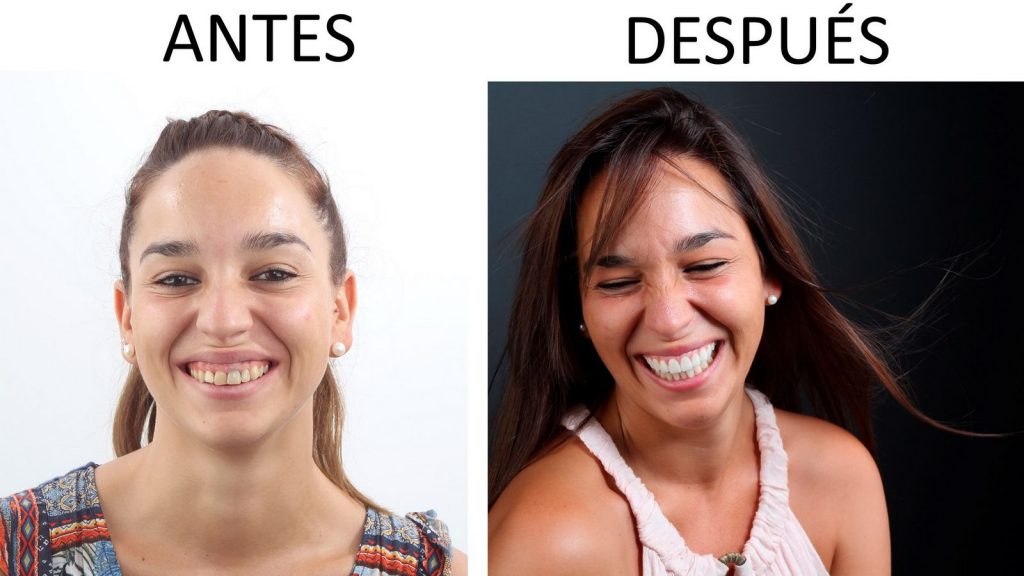
You can even perform an aesthetic test to verify the change that we can achieve with the final position of the gum before starting the treatment. In this way, you can see how it will look, assess the change in appearance and even participate in the final design of your smile.

Payment facilities in up to 5 years
Did you find all the information you were looking for? Did you find it interesting? Leave us your opinion:


























